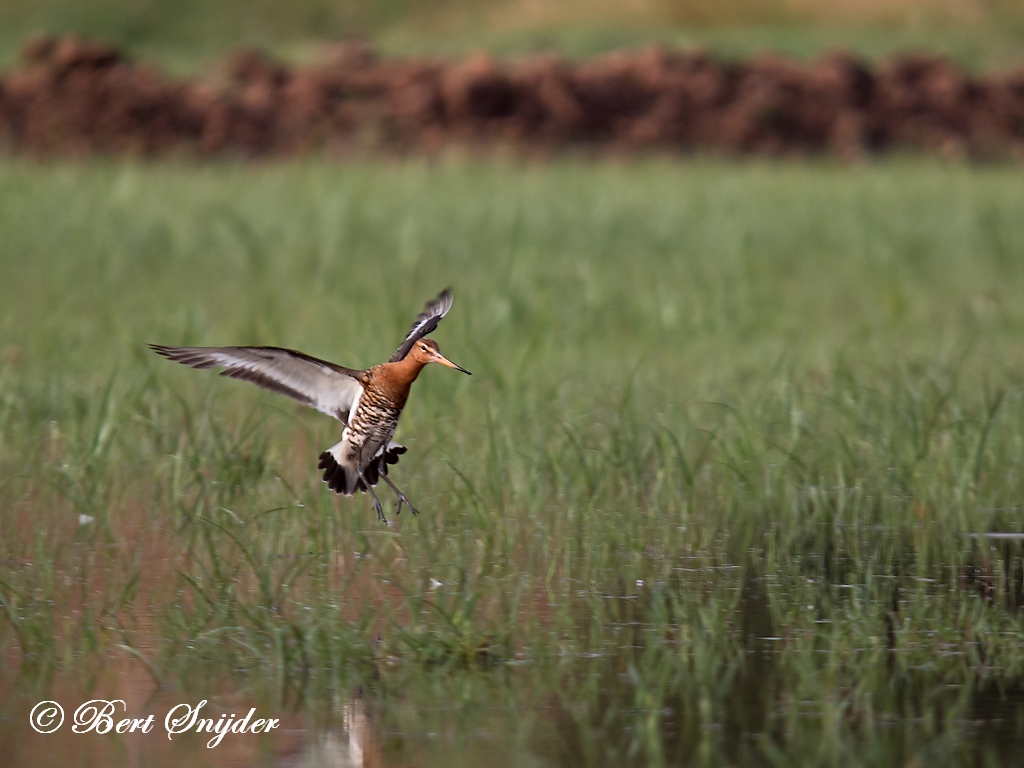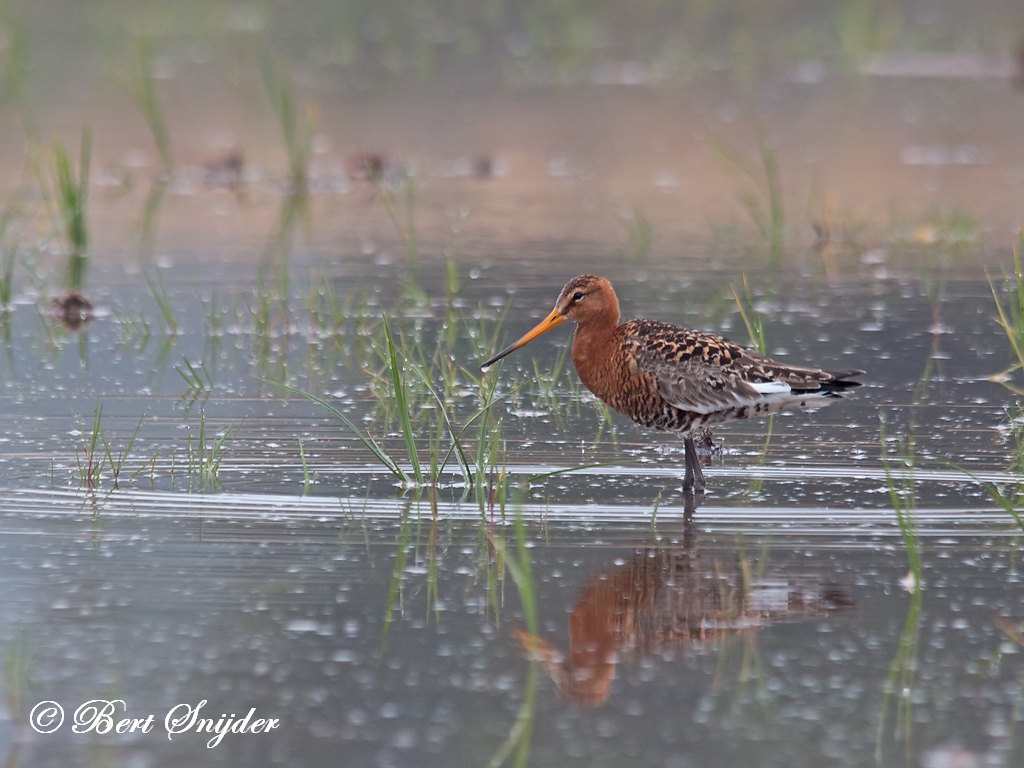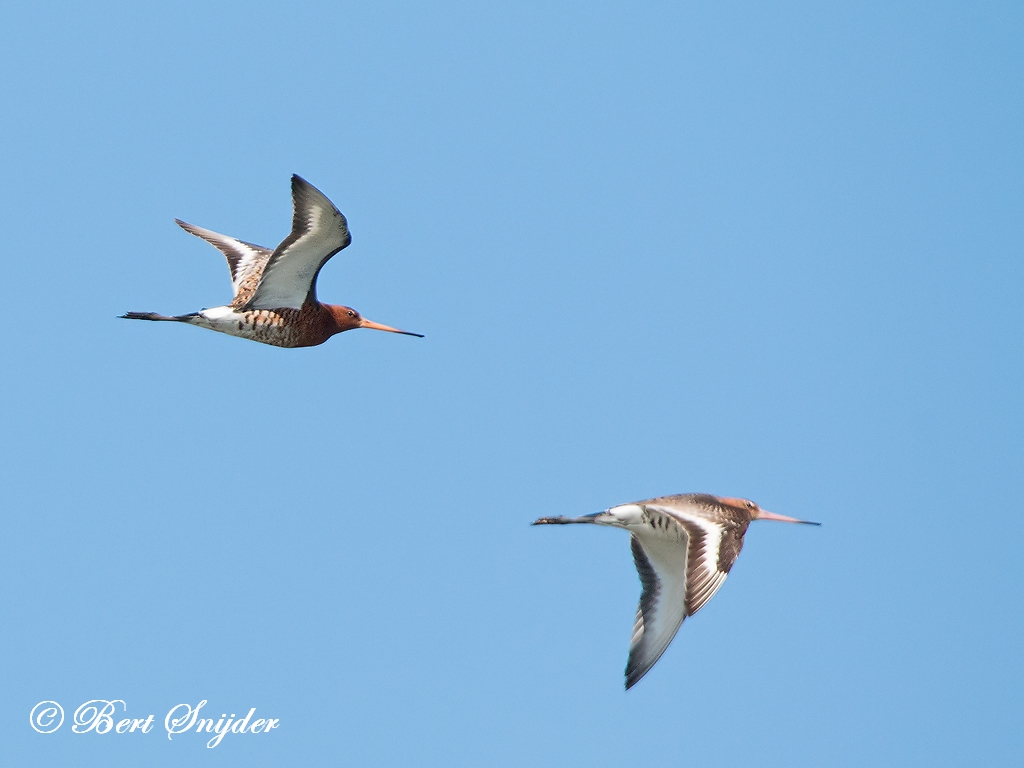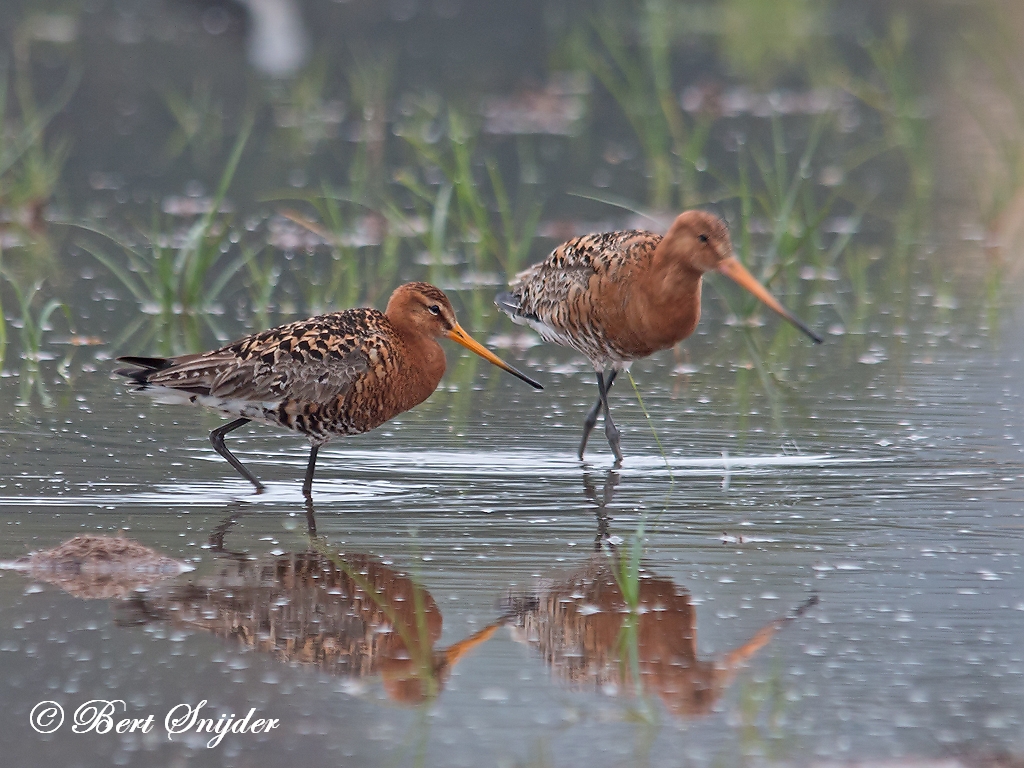Icelandic Black-tailed Godwit, Ijslandse Grutto, Uferschnepfe-islandica
Spotted in the Alentejo region of Portugal.
Up until around 1900, Icelandic Blac-tailed Godwits were rare birds in their natal country. They only bred in restricted areas in the Icelandic southern lowlands and the population probably only numbered in the low thousands.

More photos at the bottom of this page:
Through the 20th century, Godwits have spread throughout low-lying areas of Iceland. This expansion is still continuing, and the reasons for the population increase are not fully understood. However, the influence of climate change and other favourable habitat changes in summer and winter are likely to be involved.
In 2004 it was estimated that the population size of Icelandic Black-tailed Godwits was to be around 47,000 individuals (Gunnarsson et al. 2005). Given the continued expansion since then, it is likely that there are now around 50-60,000 Icelandic Godwits.
Icelandic Black-tailed Godwits arrive in Iceland between mid April and mid May. Early arriving birds stage for a few days on a small number of mudflats and freshwater sites around Iceland. Surveys of these locations each year have allowed us to monitor arrival dates of individual Godwits (Gunnarsson et al. 2006) and the timing of peak numbers on individual sites. The importance of these sites is very clear, with at least 30% of the population depending on them and individual sites supporting c. 10% of the whole population at one time.
After arrival on breeding grounds, Icelandic Black-tailed Godwits set up their territories 2-3 weeks before the onset of incubation in late May. Icelandic Godwits currently breed throughout lowland areas in Iceland, either on coastal plains or inland river basins, using wet marshes and mesic grassland to hide the nests. Peak hatching extends from mid to late June and the alarm displays by adults indicate the presence of well-hidden chicks within the vegetation. From June onwards, unsuccessful breeders start to gather and flock, in preparation for migration. Some of these birds are reported already back on the wintering grounds in late June.
By the end of July, most chicks have fledged and successful adults start leaving Iceland, with the last adults usually having left before mid August. Most juveniles leave Iceland in August and September, thus many recently fledged chicks must undertake the first migration either on their own or with other juveniles. As adults tend to return to the same breeding and wintering grounds, the decisions that juveniles make about where to settle can greatly influence the whole of the rest of their lives (Gill et al. 2001, Gunnarsson et al. 2005).
Some Icelandic Black-tailed Godwits migrate directly to their winter sites while others stop to moult at sites such as the Wash estuary in eastern England. Intertidal mudflats are preferred foraging areas in autumn and winter but in many locations Icelandic Godwits move inland to feed on freshwater grasslands during late winter and early spring.
Icelandic Black-tailed Godwits that winter in the southern part of the range start moving gradually northwards around late January and February, in preparation for the spring migration to Iceland. Many birds from Portugal and France move first to the Netherlands, from where they depart in April for the last leg of their migration journey.




Other synonyms:
German: Uferschnepfe-islandica
English: Black-tailed Godwit (Icelandic), Northern Black-tailed Godwit
French: Barge à queue noire, Barge d’Islande
Latin: Limosa limosa islandica
Dutch: Ijslandse Grutto
Norwegian: Svarthalespove, underarten islandica
Slovak: brehár islandský
Travel Birdwatching Holiday Alentejo, Vacation Portugal for birders to see birds on your trip.